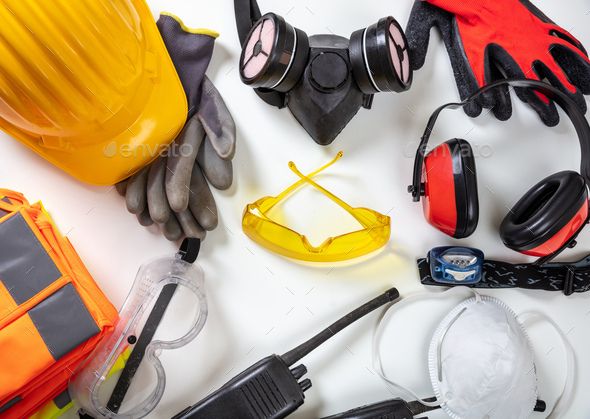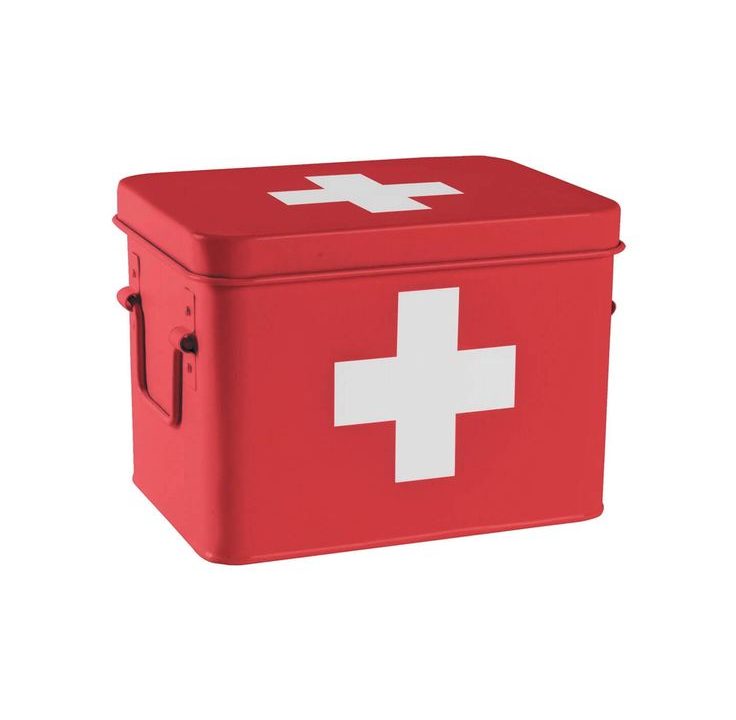Understanding Safety Equipment: Exploring Types and Functions for a Safer Environment

What Item of Personal Safety Equipment Is Required When Working at Height
July 26, 2023Safety equipment, a term that spans a wide array of protective gear and devices, is designed to safeguard individuals from potential harm in diverse environments. This broad category encompasses everything from road protective equipment to industrial protective equipment.
Each type of this equipment serves a distinct yet crucial purpose. Road safety equipment, for instance, helps regulate traffic, warns about potential hazards, and safeguards road workers. Industrial protection equipment shields workers from the multitude of dangers they face daily, such as falling objects, chemical spills, and electrical shocks.
Hearing protective equipment plays a pivotal role in environments characterized by high decibel levels, protecting individuals from potential hearing loss. Fire protection equipment is instrumental in preventing and dealing with fire outbreaks and saving lives and properties.
On the other hand, personal safety equipment is designed to minimize exposure to everyday hazards, ensuring individuals can enjoy their activities safely. This blog post aims to provide an in-depth exploration of the various types and functions of safety tools.
By delving into each category, we’ll highlight how these protective devices foster a safer environment, highlighting their importance in our day-to-day lives and specialized industries. It’s not just about understanding what they are but also appreciating how they contribute to our well-being and safety.
The Importance of Safety Equipment
Before we delve into the details, it’s fundamentally important to understand why safety tools are so essential. In its most basic form, they serve as our primary shield against potential environmental hazards, be it at work, home, or public places.
This equipment has a multi-faceted role:
- Injury Prevention: Whether it’s a helmet protecting a construction worker from falling debris, gloves preventing cuts and chemical burns in a lab, or knee pads used by skateboarders to avoid injuries, safety protection tools are instrumental in preventing physical harm. It ensures that individuals can carry out their tasks safely and efficiently.
- Health Protection: In some environments, hazards aren’t just physical. Industries such as construction, manufacturing, or chemical processing often expose workers to harmful substances. Here, protecting equipment like respirators, protective clothing, and safety glasses are vital in preventing illnesses.
- Life-Saving: The importance of safety tools becomes starkly evident in life-threatening situations. Equipment like seat belts, life jackets, and fire extinguishers can mean the difference between life and death, underscoring their critical importance.
- Property Protection: These tools also play a crucial role in safeguarding properties from damage. For instance, smoke detectors and fire sprinklers can prevent a small spark from turning into a disastrous fire, saving properties and reducing potential financial losses.
- Legal Compliance: Many industries have strict safety regulations that mandate the use of certain equipment. Using this equipment is not only necessary for the safety of the individuals but also for adhering to legal requirements, avoiding penalties, and maintaining a company’s reputation.
- Enhancing Productivity: When individuals feel safe, they can focus better on their tasks, enhancing productivity and efficiency. These protection tools contribute to creating a secure, stress-free environment, fostering better performance.
- Cost Saving: Accidents and injuries can lead to substantial costs, including medical expenses and compensation payouts. By preventing such incidents, these tools can result in significant cost savings for individuals and businesses.
In essence, safety equipment is much more than tools or gear. They are a critical component of our daily lives, protecting us, making us feel secure, and enabling us to perform our best in various activities. Their importance cannot be overstated—they are truly lifesavers in many situations.
Types of Various Safety Equipment
This equipment is an essential aspect of our daily lives and comes in various forms, and serves diverse purposes. These protective tools are designed to safeguard us from potential hazards, whether at home, at work, or during leisure activities.
The types of equipment for keeping us safe are as varied as the environments they’re used in, each meticulously designed to offer optimal protection against specific dangers.
-
Road Safety Equipment
This equipment is essential in maintaining order and safety on our roads. These tools, including traffic cones, road barriers, speed bumps, and more, play a variety of roles to ensure smooth and safe travel.
-
Traffic Cones and Barriers
Traffic cones and barriers are indispensable tools used to manage and control the flow of traffic. They are particularly crucial in areas where construction work is ongoing, at accident sites, or in zones where normal traffic patterns are temporarily disrupted.
These bright, easily recognizable symbols serve as visual guides for drivers, enabling them to navigate safely around potential hazards. In addition to their use in guiding traffic, cones, and barriers are also used to demarcate safe zones for road workers, protecting them from passing vehicles.
-
Speed Bumps
Speed bumps are a simple yet effective road safety tool designed to regulate the speed of vehicles, especially in sensitive areas like near schools, hospitals, or residential zones. By forcing drivers to reduce their speed, these traffic calming devices significantly lower the risk of accidents.
Speed bumps are often coupled with signage to alert drivers of their presence ahead, further enhancing their effectiveness. They are an important part of traffic management strategies in many communities, contributing to safer roads for both drivers and pedestrians.
-
Road Signs
Road signs are another critical component of road safety tools. From speed limit signs and stop signs to pedestrian crossing signs and hazard warnings, these signs provide crucial information to drivers, helping them make safe decisions on the road.
-
Traffic Lights
Traffic lights are fundamental in controlling vehicle and pedestrian movement at intersections, reducing the chances of collisions. They ensure an orderly flow of traffic and help pedestrians cross roads safely.
In essence, these road safety tools play a vital role in making our roads safer. By understanding their importance and adhering to their guidance, we can contribute to a safer, smoother, and more efficient travel environment for everyone.
-
Industrial Safety Equipment
Industrial safety equipment tools are a non-negotiable necessity in any production, manufacturing, or construction setting. These tools, ranging from hard hats and safety glasses to gloves and safety boots, are designed to shield workers from a multitude of hazards they encounter daily.
These hazards can include falling objects, chemical spills, electrical shocks, extreme temperatures, loud noises, and more.
-
Hard Hats
Hard hats are a fundamental piece of equipment in industries where there’s a risk of head injuries due to falling objects, accidental bumps, or electrical contact. Predominantly used in construction sites, mining areas, and other sectors dealing with heavy materials, these safety helmets provide a layer of protection for the wearer’s head. Some hard hats also come equipped with face shields or earmuffs for additional protection.
-
Safety Glasses and Goggles
Safety glasses and goggles protect the eyes from harmful substances, flying debris, sparks, and intense light. They’re crucial in laboratories, factories, construction sites, and workshops where workers handle chemicals, operate power tools, or perform welding tasks. Different types of safety glasses – such as anti-fog, tinted, or prescription safety glasses – may be used depending on the specific hazard.
-
Safety Gloves
Safety gloves are another essential component of industrial protection equipment. They protect the hands from various risks like cuts, burns, chemical exposure, electrical shocks, and biohazards. The material and design of the gloves depend on the specific job requirements. For instance, cut-resistant gloves are used in metal handling, while insulated gloves are used for electrical work.
-
Safety Boots
Safety boots, often equipped with steel toe caps and slip-resistant soles, protect workers’ feet from injuries caused by falling objects, punctures, slips, or exposure to harmful substances. They are a must in environments where heavy objects are handled or where the floor can be slippery or uneven.
-
Respiratory Protective Equipment (RPE)
In environments where workers are exposed to airborne contaminants or insufficient oxygen, Respiratory Protective Equipment (RPE) such as masks, respirators, and air purifying systems become necessary. They filter out harmful particles, gases, and vapours or supply clean air, protecting the user’s respiratory system.
It’s important to remember that the correct use of these tools can significantly reduce the risk of workplace injuries and illnesses.
-
Hearing Safety Equipment
In environments characterized by high noise levels, such as construction sites, airports, music concerts, or even factories with heavy machinery, hearing safety equipments is absolutely essential. Items like earplugs and earmuffs are designed to minimize noise exposure, protecting individuals from hearing loss.
-
Earplugs
Earplugs are small devices that fit into the outer ear canal, effectively blocking the direct entry of excessive noise. They come in various shapes and sizes, some even custom-made to fit individual ears for maximum comfort and effectiveness.
-
Earmuffs
Earmuffs, on the other hand, cover the entire outer ear to reduce noise. They are often used in extremely loud environments where more noise reduction is necessary. Some advanced models also come with built-in communication systems, allowing users to communicate without removing their protection.
Regular and correct use of these hearing safety tools can significantly reduce the risk of noise-induced hearing damage, ensuring individuals’ long-term auditory health.
-
Fire Protection Equipment
Fire protection equipment, including fire extinguishers, smoke detectors, and fire sprinkler systems, play a crucial role in preventing and managing fire outbreaks. These devices save properties from fire damage and lives by providing early warnings and enabling quick responses.
-
Fire extinguishers
Fire extinguishers are portable devices that release chemicals or water to extinguish small fires. They’re essential in any building as a first line of defense against fire. However, knowing how to use them correctly is just as important as having them installed.
-
Smoke detectors
Smoke detectors are small electronic devices that sound an alarm when smoke is detected, signaling a potential fire. Early detection allows for a faster response time, potentially preventing a small incident from turning into a major disaster.
-
First Sprinkle Systems
Fire sprinkler systems, usually activated by heat, automatically release water over the area where high temperatures have been detected. These systems can control a fire until firefighters arrive, minimizing damage and potentially saving lives.
-
Personal Safety Equipment
These tools refer to any device worn to minimize exposure to hazards that cause injuries or illnesses. Examples include helmets for cyclists, knee pads for skateboarders, life jackets for water activities, and masks for protection against airborne diseases.
-
Helmets
Helmets, whether for cyclists, motorcyclists, or sports enthusiasts, protect the head from potential impact injuries, reducing the risk of serious damage like traumatic brain injuries.
-
Knee pads
Knee pads, wrist guards, and elbow pads are commonly used in sports like skateboarding or rollerblading. They cushion the joints, preventing scrapes, bruises, and fractures during falls or collisions.
-
Life Jackets
Life jackets and buoyancy aids are essential for water activities, providing flotation that helps wearers keep afloat in the water, preventing drowning.
-
Masks
Masks, particularly relevant in the context of the ongoing pandemic, protect against airborne diseases by filtering out harmful particles as we breathe.
Each piece of this equipment serves a specific function but shares a common goal – to allow individuals to carry out their tasks or enjoy their activities safely.
Conclusion
Safety equipment, whether for road use, industrial applications, hearing protection, fire prevention, or personal use, plays an integral role in creating a safer environment. By understanding their types and functions, we can utilize them effectively and ensure our safety and those around us.




